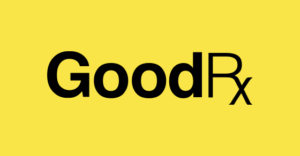You’ve Successfully Navigated the Largest Healthcare Reform in U.S. History With Us — Now What?
 So you’ve been with us since 2014. When it all started. What was “it?” The Affordable Care Act, more commonly known as Obamacare.
So you’ve been with us since 2014. When it all started. What was “it?” The Affordable Care Act, more commonly known as Obamacare.
The ACA was the largest healthcare reform in U.S. history. From the opening of the exchanges, to navigating “tangled” physician networks, to explaining new available tax credits, to helping large employers navigate the employer mandate… we’ve helped hundreds-and-hundreds of policyholders navigate it all. Successfully.
Considering all of the “issues” you’ve heard about in the media during the roll-out of reform over the past five years, generally speaking, our policyholders have experienced a very smooth experience in a turbulent environment. So sit back, take a break, and relax. We’re happy to have you on-board, and thank you for being here.
Here’s what to know about what’s next: we’ll continue to be with you, as we move forward and navigate the future of healthcare in the United States.
This is our opinion: we believe the U.S. health coverage (ie: the health insurance environment) is going to continue to be a very complex marketplace in the future. There will probably continue to be legislative changes at the national level. There will probably continue to be legislative changes at the state levels. More than likely, new products will continue to evolve (ie: health insurance policies, account-based funding tools, etc).
Private insurance (and other private funding tools like Health Savings Accounts) will most likely continue to “integrate” with current and new government options. It will be very important to know and understand what is available, so you’re putting things together that make sense (both cost and coverage-wise), for yourself or your business.
We look forward to helping you with this, as we’ve helped so many policyholders navigate healthcare reform so far. You can count on PolicyAdvantage.com to get you the most up-to-date, relevant information available in the industry. Contact us anytime if you’d like to visit with a consultant: Email: [email protected], general phone: 1(800) 617-0089, or chat with us online at www.PolicyAdvantage.com with any general questions you have. We’ll put you in contact with an agent.
Thanks for stopping by, we hope you found our information to be helpful. Check back at our blog to get further information about funding healthcare. Also, please share with your friends, clients, colleagues, and family. Here are a few of our other information outlets:
Home Page: https://policyadvantage.com
Twitter: http://www.twitter.com/PolicyAdvantage
Facebook: http://www.facebook.com/PolicyAdvantage
YouTube: http://www.youtube.com/PolicyAdvantage
Pinterest: http://www.pinterest.com/PolicyAdvantage
Word Press: http://www.policyadvantage.wordpress.com


 Here’s the down-low on “short term” health insurance plans in California. Short term health insurance plans were used as an alternative to “Obamacare” (ACA) plans if someone needed coverage for a short period of time (previously less than 3 months, and more recently, less than 12 months).
Here’s the down-low on “short term” health insurance plans in California. Short term health insurance plans were used as an alternative to “Obamacare” (ACA) plans if someone needed coverage for a short period of time (previously less than 3 months, and more recently, less than 12 months). 

 PolicyAdvantage.com is proud to announce that we’re now offering small group health insurance plans (1-100 employees) from Oscar Health Insurance, as of June 1st, 2018. These plans will be available to small groups in Los Angeles & Orange County.
PolicyAdvantage.com is proud to announce that we’re now offering small group health insurance plans (1-100 employees) from Oscar Health Insurance, as of June 1st, 2018. These plans will be available to small groups in Los Angeles & Orange County.
 Prescription drug coverage in health insurance plans can sometimes be confusing. We’ve put together a simple, short guide that outlines the four “tiers” of prescription drug coverage found in most individual health insurance plans, so that you can understand your options better.
Prescription drug coverage in health insurance plans can sometimes be confusing. We’ve put together a simple, short guide that outlines the four “tiers” of prescription drug coverage found in most individual health insurance plans, so that you can understand your options better. 